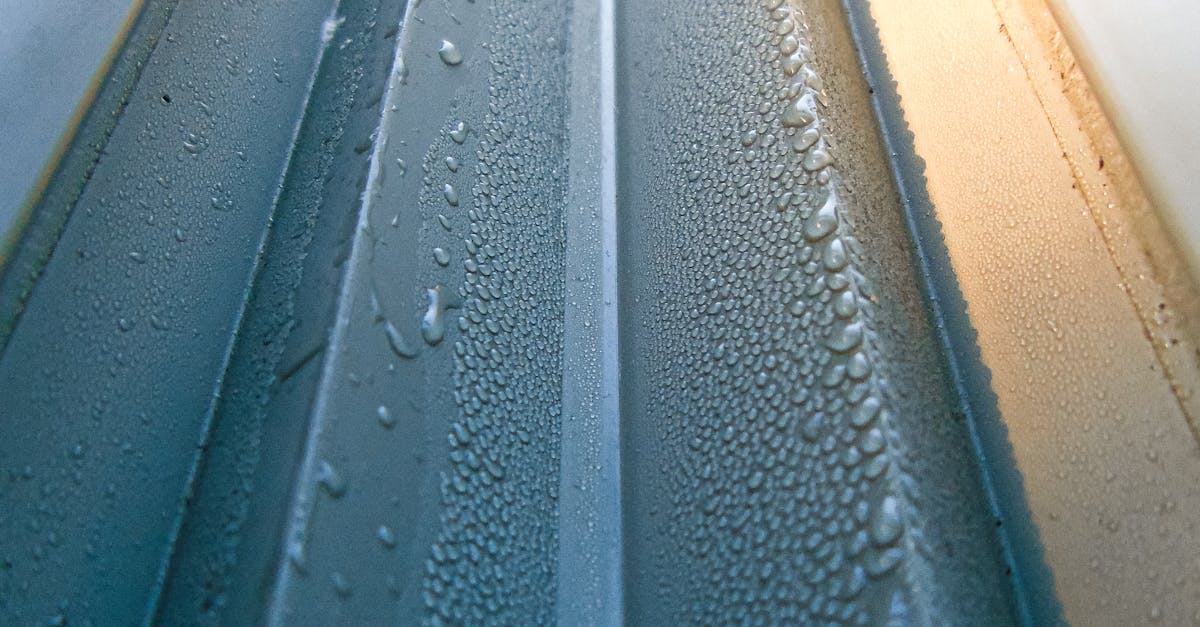
Securing the Gutters
To ensure a sturdy installation, securing the gutters properly is crucial in the process. The team at Georgia Gutter Installation follows a meticulous approach when fastening the gutters to the fascia. By using durable screws and brackets, they firmly attach the gutters, ensuring they can withstand various weather conditions and effectively redirect water away from the house. This step is fundamental in guaranteeing the longevity and functionality of the gutter system.
Furthermore, the experts at Georgia Gutter Installation pay close attention to the alignment of the gutters during the securing process. By carefully measuring and aligning each section, they ensure a seamless fit that prevents leaks and potential damages. By meticulously securing the gutters in place, the installation team at Georgia Gutter Installation aims to deliver a high-quality and long-lasting gutter system for their clients.
Fastening Gutters to the Fascia
To ensure a secure attachment of the gutters to the fascia, Georgia Gutter Installation recommends using durable screws or spikes that are resistant to corrosion. These fasteners should be placed approximately every 24 to 36 inches along the length of the gutter to provide ample support and stability. Proper spacing of the screws or spikes is crucial to maintain the integrity of the gutter system and prevent sagging or detachment over time, especially during inclement weather conditions.
When fastening the gutters to the fascia, it is essential to angle the gutters slightly downward towards the downspouts to facilitate proper water flow and drainage. This slight slope ensures that water effectively moves away from the roof and foundation of the building, minimizing the risk of water damage and erosion. Georgia Gutter Installation emphasizes the significance of securely fastening the gutters to the fascia to maintain the structural integrity of the system and prolong its lifespan.
Adding Gutter Guards
Adding gutter guards is an essential step in completing the Alpharetta, Georgia gutter installation process. These guards play a crucial role in preventing debris, such as leaves and twigs, from clogging the gutters. By installing gutter guards, homeowners can maintain the efficiency of their gutter system and reduce the need for frequent cleaning and maintenance.
There are various types of gutter guards available in the market, including mesh screens, surface tension guards, and foam inserts. Homeowners should choose a gutter guard that best suits their needs and the local weather conditions in Alpharetta, Georgia. Once the gutter guards are securely in place, they provide a barrier that allows water to flow smoothly through the gutters while blocking out unwanted debris.
Placing Leaf Protectors
Placing leaf protectors is a crucial step in the Alpharetta, Georgia gutter installation process. These protectors help prevent leaves, twigs, and other debris from clogging the gutters, ensuring smooth water flow and minimizing maintenance needs. Leaf protectors come in various styles, including screens, foam inserts, and brush-like mechanisms, all designed to keep unwanted debris out of the gutters.
When placing leaf protectors, it is essential to ensure they are securely fastened and cover the entire gutter length. Proper installation of leaf protectors can significantly extend the lifespan of the gutters by reducing the risk of blockages and water damage caused by overflowing gutters. By taking the time to correctly place leaf protectors during the Alpharetta, Georgia gutter installation, homeowners can enjoy a more efficient gutter system that requires less frequent cleaning and maintenance.
Testing the System
Once the gutters have been securely fastened to the fascia and the gutter guards have been added, the next step in Alpharetta, Georgia Gutter Installation is testing the system. This crucial phase ensures that the gutters are functioning correctly and efficiently.
To test the system, flush the gutters with water. This will help identify any potential leaks, clogs, or areas that may need adjustments. By thoroughly testing the system, you can guarantee that your gutters will properly direct rainwater away from your home, protecting it from potential water damage.
Flushing Gutters with Water
To ensure that the gutter system is functioning properly after installation, a crucial step involves flushing the gutters with water. The process of flushing the gutters clears out any debris or blockages that might inhibit proper water flow. For residents in Alpharetta, Georgia, gutter installation is not complete until the gutter system has been thoroughly flushed.
Flushing the gutters with a steady stream of water allows for a visual inspection to confirm that the system is free of clogs or obstructions. By running water through the gutters and downspouts, any potential issues can be identified and addressed promptly. This final step in the Alpharetta, Georgia gutter installation process is essential to ensure that the system is fully functional and prepared to efficiently manage rainwater runoff.
FAQS
What materials are needed to install gutters?
The materials needed to install gutters typically include gutters, downspouts, elbows, screws, brackets, sealant, and a ladder.
Do I need professional help to install gutters?
While it is possible to install gutters yourself, it is recommended to seek professional help to ensure proper installation and avoid potential issues in the future.
How are gutters secured to the house?
Gutters are typically secured to the fascia board of the house using brackets and screws to ensure stability and prevent sagging.
What are gutter guards and why are they important?
Gutter guards are protective covers that are placed over the gutters to prevent leaves, debris, and other materials from clogging the system, thus reducing maintenance needs.
How can I test if my gutter system is working properly?
You can test your gutter system by flushing it with water from a hose to check for any leaks, clogs, or improper drainage, ensuring that the system is functioning as intended.




